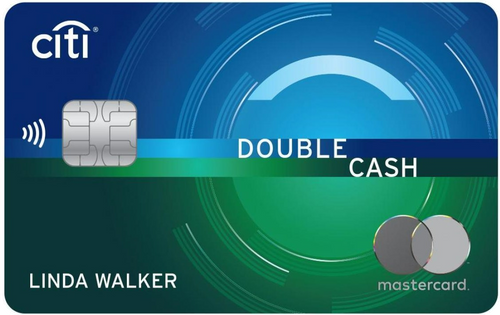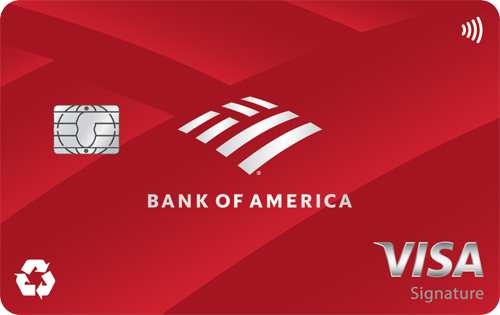Citi is an advertising partner
The Citi Double Cash® Card and the Bank of America® Customized Cash Rewards credit card* are strong rewards cards with some similar features and a few important differences. Both have strong rewards rates, no annual fees and offer long introductory balance transfer periods. The Customized Cash Card is the standout card, however, due to its additional features and introductory purchase annual percentage rate.
The Customized Cash is best suited for lower spenders. Higher spenders, or those who don’t want to fuss with rewards categories, can earn a steady flat cash-back rate and might prefer the Double Cash card.
If you want to build a more robust rewards strategy, it could make sense to sign up for both of these cards. Here’s what you need to know about the Citi Double Cash and Bank of America Customized Cash cards to decide if either is a good fit for your wallet.
Comparing reward programs
- Plus, for a limited time, earn 5% total cash back on hotel, car rentals and attractions booked on the Citi Travel℠ portal through 12/31/24.
- Earn 2% on every purchase with unlimited 1% cash back when you buy, plus an additional 1% as you pay for those purchases. To earn cash back, pay at least the minimum due on time.
- 3% cash back in the category of your choice
- 2% at grocery stores and wholesale clubs (up to $2,500 in combined choice category/grocery store/wholesale club quarterly purchases)
- 1% cash back on all other purchases
These cards earn rewards in very different ways. The Double Cash is a flat-rate cash-back card, which means its rewards rate is the same, no matter what you buy. The Customized Cash Rewards card lets you choose which category you’ll earn a greater rewards rate on.
While the Customized Cash is more flexible than other rotating rewards credit cards, since you can choose which category you earn higher rewards in, it can’t compete with the Double Cash’s ability to earn a consistently high cash-back rate for every purchase.
The Customized Cash card is also hampered by its low spending limit. Considering the Double Cash earns unlimited rewards, there will be a point where, given enough spending, you’ll earn more rewards with the Double Cash than the Customized Cash.
If you were to spend $6,000 in a 3% category with the Customized Cash, for example, you could earn up to $110 in rewards that quarter. You’d earn $75 from the 3% rewards tier, and an additional $35 after the rate drops to 1%. If you were to spend $6,000 with the Double Cash on the same category in the same span of time, you’d earn $120 (1% when you make the purchase and 1% when you pay the bill for those purchases).
That said, if you spend less than $2,500 or about $5,000, the Customized Cash may be a rewarding choice. But because the Double Cash has the potential to outperform the Customized Cash, it has the better rewards program.
But you don’t need to choose between the two cards. Neither charges an annual fee, which means you could use them together. Use the Customized Cash to earn 3% in the category of your choosing up to the spending threshold, and the Double Cash for everything else.
Welcome bonus
- Earn $200 cash back after you spend $1,500 on purchases in the first 6 months of account opening. This bonus offer will be fulfilled as 20,000 ThankYou® Points, which can be redeemed for $200 cash back.
- $200 online cash rewards bonus after you make at least $1,000 in purchases in the first 90 days of account opening
While both credit cards payout the same amount -- $200 -- they each have different spending thresholds and provide different times in which to reach it.
To qualify for the Double Cash’s bonus, you’d need to spend $250 each month across six months, whereas with the Customized Cash Rewards Card, you’d have to spend $334 monthly for 90 days, or three months. Therefore the Double Cash’s welcome bonus is the better deal.
Additional card perks
- Virtual credit card number
- 24-hour fraud protection
- $0 liability on unauthorized charges
- Roadside dispatch
- Extended warranty
- Visa Signature Concierge
Unfortunately, the Citi Double Cash doesn’t offer many additional card perks like its competitors. What it does have, however, is the ability to generate virtual card numbers. This could help keep your information more secure when shopping online.
The Customized Cash Rewards card also provides cardholders with some useful perks, by comparison, including roadside dispatch, extended warranty and access to Visa Signature Concierge. As it’s a Visa Signature card, it may include other perks. Check your Guide to Benefits, which comes with the card, to be sure.
Introductory APR offer
- Get 0% introductory APR for 18 months on Balance Transfers (then 19.24% to 29.24% variable). Balance transfers must be completed within four months of account opening.
- Get 0% introductory APR for 15 billing cycles, for purchases and for any balance transfers made in the first 60 days. (Then it’s 18.24% to 28.24% variable.)
Since the primary use for these cards is to earn rewards, an introductory APR offer for purchases is going to be more useful than a balance transfer.
Introductory APRs can go a long way toward improving both your finances and your credit scores by avoiding costly interest charges and eliminating existing credit card debt
However, the Double Cash’s introductory balance transfer APR could still be of use. Just keep in mind transferring a balance will complicate using the card for its competitive rewards rate. We don’t recommend using any credit card that you’ve transferred a balance onto until you’ve paid it off in full.
Card fees
Winner: Tie
Neither credit card charges an annual fee, which makes them a good choice to pair with other credit cards or each other. Both cards charge foreign transaction fees, which means you’ll pay a fee for purchases you make internationally when using either.
The Citi Double cash will eventually have a higher balance transfer fee as well. Here’s the full fee:
- Introductory balance transfer fee of 3% of each transfer (minimum $5) completed within the first four months of account opening. A balance transfer fee of 5% of each transfer ($5 minimum) applies if completed after four months of account opening.
The Customized Cash Rewards card also has a balance transfer fee of 3%, which will increase to 4% after the first 60 days from account opening. With the Customized Cash card, you also only have 60 days to complete any balance transfers to qualify for its introductory APR compared to four months with the Double Cash.
The bottom line
Overall, the Customized Cash Rewards card has better card features and may be the more rewarding choice if you plan to spend $5,000 or less per quarter. But it works even better when paired with a flat-rate cash-back card, like the Double Cash. That way, you’ll earn a good return on all of your spending.
If you don’t want to pay attention to rewards categories or navigate spending thresholds, the Double Cash makes a compelling case. It has one of the strongest cash-back rates for a card without an annual fee and has no limit to what you can earn. It also offers a significant amount of time to pay down a transferred balance, which can help you knock out existing credit card debt and improve your finances. It doesn’t have many other additional card perks, but you could pair it with another card to make up for it.
FAQs
Most balance transfer fees run between 3% to 5% of the transferred balance (with minimum fees ranging between $5 and $10). Typically, paying a balance transfer fee will cost less than paying continuous interest charges on a credit card balance.
A foreign transaction fee is the cost of making a transaction in another country that would normally require a different type of currency. It usually ranges from 3% to 5%, but you can avoid this fee by option for a travel credit card, since the best ones won’t charge foreign transaction fees.
To figure out how much you should pay each month to avoid interest, divide the balance by the number of months you have to pay it down. For example, if you transfer a balance of $3,000 to a card with a 15-month introductory APR period, you’d need to pay at least $200 each month to pay it off in time. However, it’s a good idea to pay more if you can afford it, just in case.
*All information about the Bank of America Customized Cash Rewards credit card has been collected independently by CNET and has not been reviewed by the issuer.
The editorial content on this page is based solely on objective, independent assessments by our writers and is not influenced by advertising or partnerships. It has not been provided or commissioned by any third party. However, we may receive compensation when you click on links to products or services offered by our partners.



